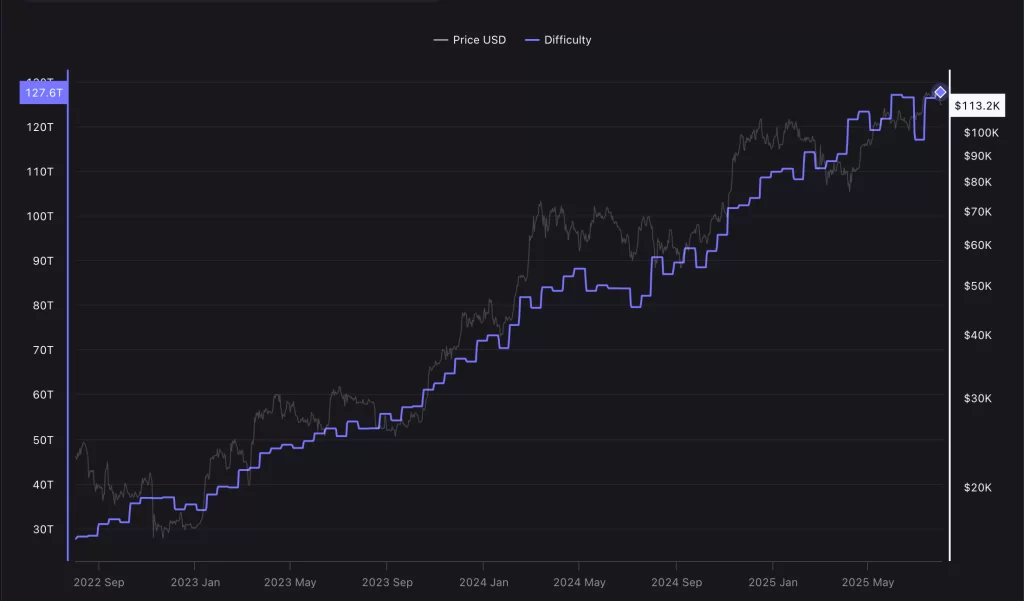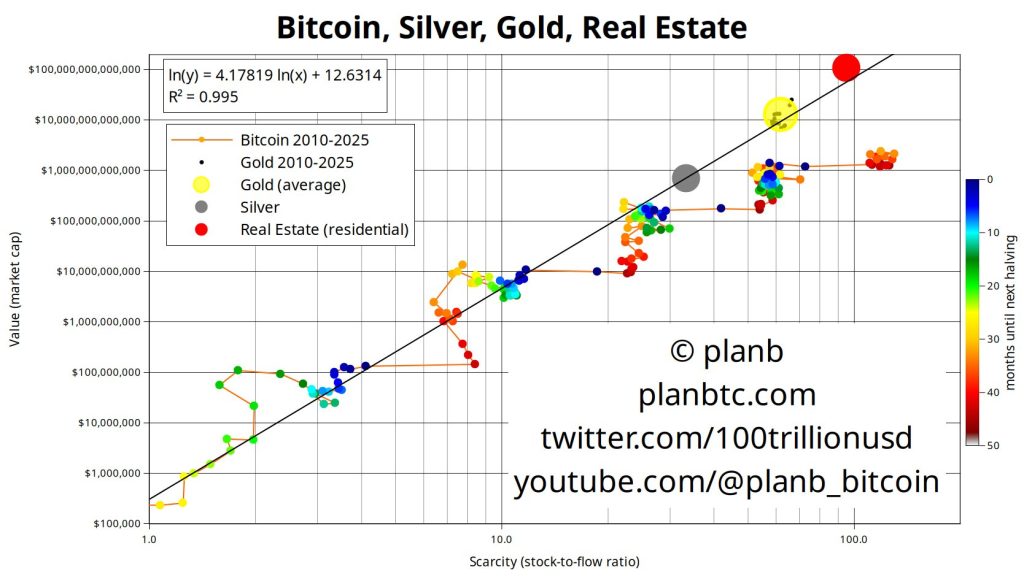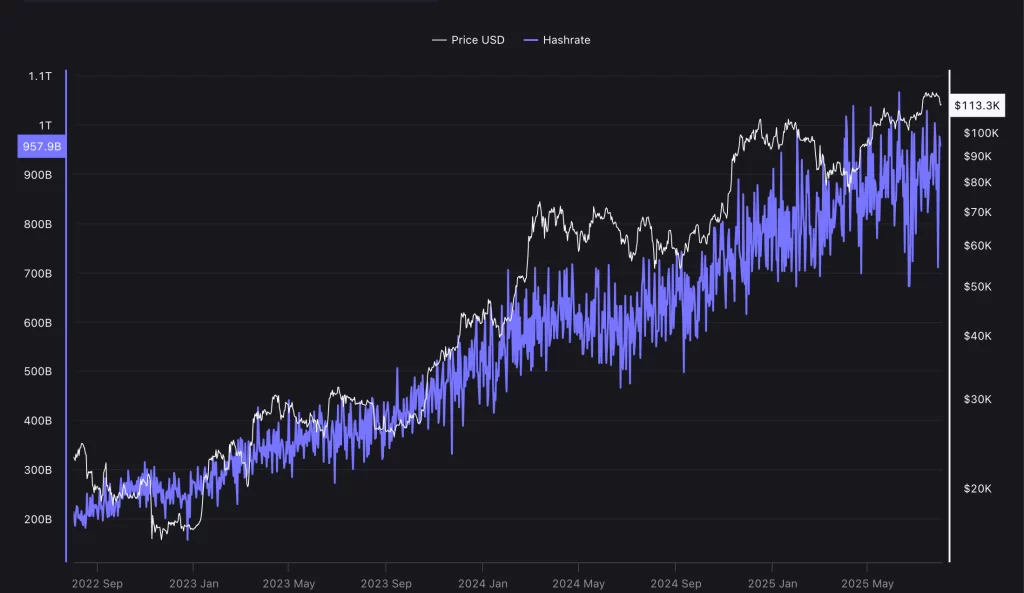Bitcoin Mining Difficulty Hits All-Time High, Set to Dip in August

Protocol mechanism maintains block timing as miners eye relief from intense competition
Bitcoin mining difficulty has surged to a record 127.6 trillion, marking a new all-time high this week. However, relief may be on the horizon for miners, as projections show a roughly 3% decrease during the upcoming adjustment on August 9, which would bring difficulty down to around 123.7 trillion.
Current data from CoinWarz reveals that the average block time is hovering around 10 minutes and 20 seconds, slightly above Bitcoin’s 10-minute target. The slight lag suggests the network is due for an easing of difficulty to maintain the protocol’s consistent pace of block production.
CryptoQuant data shows that while difficulty dropped sharply at the end of June and during early July—falling to a low of 116.9 trillion—it quickly rebounded in the latter half of July, continuing its long-term upward trajectory.
The interplay between mining difficulty and the network’s total hashrate remains a central factor in miner profitability and the integrity of Bitcoin’s controlled supply issuance.

The stock-to-flow ratio and Bitcoin’s price resilience
Bitcoin’s difficulty adjustments serve more than just technical fine-tuning—they help preserve the asset’s scarcity-driven value. At the core of this is the stock-to-flow ratio, which compares the existing supply of an asset with its rate of new production.
A high stock-to-flow ratio means new supply has little impact on market prices. For example, silver’s relatively low ratio has made it more volatile and susceptible to oversupply shocks, especially when prices surge and attract more mining activity.
Bitcoin, however, stands apart. With over 94% of its fixed 21 million supply already mined, Bitcoin boasts a stock-to-flow ratio higher than gold’s. While gold sees annual inflation of around 2%, Bitcoin’s scarcity is mathematically locked in. “Gold’s stock-to-flow is about 60—Bitcoin’s is closer to 120, making it twice as scarce,” said PlanB, creator of the popular stock-to-flow valuation model.

This scarcity is enforced by the difficulty adjustment mechanism, which ensures that new supply enters the market in a tightly controlled, predictable rhythm. As more miners compete, difficulty rises to preserve the 10-minute block interval. If miners exit and hashrate drops, the protocol lowers difficulty to keep production steady.

By maintaining this balance, Bitcoin avoids supply shocks that could destabilize its price, making it one of the few assets with production inelasticity built directly into its code.




